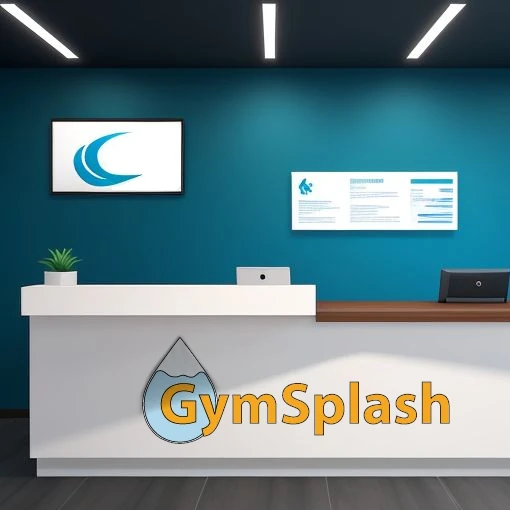Training studio owners looking to enter the fitness marketing game can sometimes be overwhelmed by where to begin. From building a brand to running promotions and advertisements, the world of marketing can feel like a scary new world. In this blog, we will dive into storytelling marketing, what it is, some benefits of implementing elements, and how you can leverage it to help distinguish yourself in the sea of options.
What is Storytelling in Fitness Marketing
When it comes to marketing, especially in the fitness world, people tend to associate it heavily with a direct call for sales. Whether it be joining the gym, selling a new online/at-home program, or even taking a new supplement, it’s pretty easy to find hard sales marketing coming at consumers in our market. However, storytelling marketing is a different way to build and market a business or brand that still has sales in mind but approaches the messaging differently.
The goal of marketing is to drive interest and awareness while converting leads into clients, which many often approach through the direct sales point method above. Storytelling for fitness marketing differentiates itself by leveraging narratives and painting a mental picture/story to communicate messages and drive interest.
Storytelling builds on the audience’s emotions and gets them to feel something from your materials. While this approach might seem identical to standard marketing tactics (e.g., identifying the audience’s pain point and showing your value in solving said problem), it leans into the “why” behind the message and draws people in through a better understanding.
Benefits of Storytelling Marketing for Fitness Studios
Whether you are trying to sell new memberships, additional training packages, or enhance client retention, storytelling marketing can have a place in your facility. Due to the nature of building on an emotional foundation with your audience, it has deeper roots regarding engagement with the brand from interested parties.
You can monetize this deeper level of attachment in various ways. For lead acquisition, this marketing approach can help your brand stand in the sea of similar copy/paste marketing templates that permeate our industry. Further, attracting the right people within your target audience and getting them invested in your branding can solidify the feeling of belonging due to recognizing shared values.
Add-on sales are another potential benefit of a deeper emotional investment in your brand. Similar to trends seen from other large consumer brands, brand-loyal members tend to be early adopters and very interested in other offerings from your company. From 6-week challenge packages to branded hoodies and t-shirts, having a story-like brand can help drive these purchases consistently within your business.
Finally, we will discuss a benefit that will not only help you invest in the long-term stability of your business but can also help reduce your overall marketing and sales budget. Of course, we are talking about retention rates. Clients who happily engage with your fitness facility and actively interact with your business tend to stick around longer, reducing your fitness facility’s churn/attrition rate.
Building Storytelling Into Your Gym’s Branding and Advertising
Implementing storytelling in your fitness marketing efforts has some profound benefits. To begin building it into your business, you need to start with the foundation of your studio’s story. Defining your training facility’s “why” questions is a great way to get the ball rolling.
Questions such as “Why did we start our facility?” or “Why do we do things the specific way we do?” help you give the backstory for your business’s end product being the right answer for the customer.
For instance, looking at this from a traditional marketing perspective, let’s look at a made-up example website homepage for a training studio:
Identity/logo: Name of the business
Tagline: Functional Fitness Studio
H1 Headline: Are you ready to change your life for the better?
Paragraph/text box: Enhance your life through a wide range of functional movement exercises, personalized coaching, and a community to back you up.
Call-to-Action: “Sign Up Now” or “Book a Consultation”
Image: Generic stock photo of a coach and client or a picture of a small group working out
This example seems pretty believable, right? While there is nothing technically wrong with this structure, let’s look at what it could be instead to get a sense of a storytelling style format.
Identity/logo: Name of the business
Tagline: Making Fitness Attainable for Busy Parents in City, State
H1 Headline: Fitness Isn’t a Priority When You Have Kids
Paragraph/text box: We get it. You’re overbooked and under-rested, but you still know fitness is important. Having gone through it ourselves, we focus on making fitness attainable for even the craziest of work/life balanced schedules. You can feel assured that our parent/coaches are well-versed in keeping workouts doable, versatile, and efficient.
Call-to-Action: “Fit In Fitness”
Image: Introduction video explaining the origins of “Why” you started your business, exactly who your target audience is (in this case, busy parents looking to get [back] into fitness), and how you make people’s lives better through a comfortable walk-through of your processes.
In this example we took some liberties in defining a specific target audience for this niche, but notice the difference in structure. While one may seem more wordy, it provides relevant information for the hook that captures visitors’ attention and draws them in. It’s also paired well with a video that gives the personalized touch and story behind the “whys” of the business – further elaborating on the text above.
Once you’ve answered and established your “why” questions, it’s time to build them into your marketing materials. Again, this involves understanding your niche and target audience, as they are the reason you are here, and then conveying those things in your marketing materials.
When building your marketing collateral pieces, like the website example, don’t focus on generic pieces you can use universally; get specific. Go into relevant details depending on the sales funnel stage for which you intend to use the piece and give resources that lead them to the next logical step to continue their journey through your story-style brand.
Things to Remember
Know Your “Why” Questions—These are the foundation blocks of what got you to the point of opening a fitness studio, training clients, and changing lives. They answer why you do things in a particular manner and why you choose to differentiate your business in the ways you do, which in turn makes them into marketing and sales points.
Visuals are Critical—similar to social media marketing, visuals can make or break your marketing campaign efforts. Focus on giving appropriate background information, stories, and relatable information for your audience to engage with and better appreciate your business for being unique in how you go about your life enhancements, body transformations, or whatever results you deliver.
Be Honest. Nobody is perfect, and in the fitness marketing business, many others try to sell from a persona of perfection. Use your imperfections and genuine self/story as a feature, not a flaw. Many times, people can see through the lies and vails that people try to market. By focusing on building a relatable brand, you need to tell a real and relatable story.
Depth and Relevant Details Help—Many times, more is better. If you are selling personal services, being personable is vital. Therefore, including relevant details about yourself, your staff, origins, history, or dreams can help add depth to your content. Additionally, being vulnerable in what you share and giving people a more personal perspective about you/your business can also help foster a deeper level of emotional engagement and interest in your studio.
Making A Splash
For personal training studio owners looking to enhance their business through deeper emotional connections with their target audience, implementing storytelling fitness marketing into their strategic plan can be a great initiative. From clearly displaying alignment with the target audience and your brand’s values in collateral or ads to healthier retention rates (or decreased churn rates), storytelling can add depth, interest, interaction, and value to your business that may have gone unnoticed otherwise.



